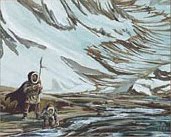One of the most common problems I see among players who are starting to become strong is playing with more than 40/60 cards in their deck. I’ve seen this in different countries, different formats and different competitive levels. Every magic community has that guy who insists there is nothing wrong with playing 75 card decks; I’m not talking about this tender soul. I’m talking about the otherwise strong players who see nothing wrong with playing 62 or 63 card decks.
Whenever I comment that someone’s deck is too large, the inevitable response is that, “they’re all good cards.” But whether or not they are good is beside the point – they aren’t equally good.
The source of the problem is a common deck building technique: many players put everything they like into a deck, sort the cards according to relative strength and then cut the weakest until they are down to 60 cards. But what happens when the bottom two cards are equally good? Figuring that they would be equally happy to draw either one, players simply leave both in.
And now we’ve found the mistake: even if these cards are just as good as each other, neither is as good as the strongest card in the deck.
Imagine, for instance, that your U/B control deck is 61 cards, and you don’t know what to cut. You have narrowed it down to dropping mana leaks from four to three or into the roils from three to two. Your friends give you different advice about which card is stronger, and you find both of them useful during playtesting. The bottom line is that neither card is as strong as your frost titan, so one of them must be cut.
Ironically, this mistake is most common in limited, where the decreased deck size actually increases the damage done by the extra card. In constructed that extra card represents 1.6 percent of your deck; in limited it is 2.4 percent. Over the course of a single game it might not matter, but if you are playing to win a tournament you can’t afford to be so lax.

No comments:
Post a Comment